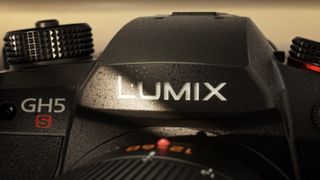
2016 welcomed a barrage of new cameras equipped with 4K video recording, and now almost every major camera manufacturer has implemented 4K shooting somewhere in their lines.
Perhaps most impressively, the technology has been successfully stretched over models of all billings. So, whether you’ve only got a few hundred pounds to spend or you're willing to stretch to a handsome four-figure sum, it’s likely you can afford a camera with the technology on board.
Just because two cameras have 4K recording, however, doesn't mean to say they're equal. The use of different sensors and different methods of capture, together with variations in output possibilities, mean two 4K cameras can behave quite differently.
Even something as simple as whether the camera uses the full width of the sensor or applies a crop factor is vital to consider, as this has a significant effect on your effective angle of view. And all of the above is before we even consider supporting features such as headphone sockets, focus peaking, zebra patterning and Log profiles.
To make things simple, we’ve rounded up what we think are the fittest 4K cameras on the market right now, and sum up why they've made the cut.

1. Panasonic Lumix GH5S
This is one uncompromising video tool
Type: Mirrorless | Sensor size: Micro Four Thirds | Resolution: 10.2MP | Lens: Micro Four Thirds | Viewfinder: EVF | Monitor: 3.2-inch vari-angle display, 1,620,000 dots | Maximum continuous shooting speed: 12fps | Movies: 4K | User level: Expert
Multi-aspect sensor design
Brilliant video spec
Absence of IS not for everyone
Battery life could be better
While it can shoot stills quite happily (although at a pretty limited 10.2MP resolution), this should be seen first and foremost as a video camera – if you want to do both you've got the Lumix GH5 (below) to fill that brief. While the absence of built-in image stabilization might be a disappointment for some, that issue aside the breadth of video features is incredibly impressive. If you want to shoot professional-quality footage without remortgaging your house to buy a pro video camera, you won't find a better video-focused camera right now.
Read our in-depth Panasonic Lumix GH5S review

2. Panasonic Lumix GH5
The Lumix GH5 is a feature-laden 4K workhorse
Type: Mirrorless | Sensor size: Micro Four Thirds | Resolution: 20.3MP | Lens: Micro Four Thirds | Viewfinder: EVF | Monitor: 3.2-inch vari-angle display, 1,620,000 dots | Maximum continuous shooting speed: 12fps | Movies: 4K | User level: Expert
DCI 4K and UHD 4K
Great fully articulating screen
Limited ISO range
Bulky for a mirrorless camera
Until the arrival of the Lumix GH5S, the GH5 was the pick of the bunch for those looking to shoot video. Quite a bit cheaper than the newer GH5S, the GH5 is a bit more versatile for those wanting to shoot both stills and video, and the video specification is still very impressive, allowing you to shoot Cinema 4K (4096 x 2160) at 60p with a bit rate of 150Mbps, while Full HD video can be captured up to 180fps. That's not all, as the GH5 offers color subsampling at 4:2:2 and a color depth of 10-bit, delivering greater color information and richer graduations. The GH5 also offers live output to external recorders such as Apple ProRes via HDMI, as well as simultaneous internal recording.
Read our in-depth Panasonic Lumix GH5 review
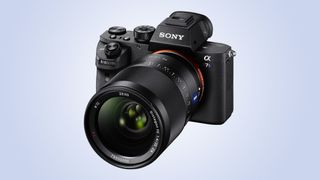
3. Sony Alpha A7S II
Excellent footage, huge dynamic range and a compact size – what’s not to like?
Type: Mirrorless | Sensor size: Full-frame CMOS | Resolution: 12.2MP | Lens: Sony E mount | Monitor: 3.0-inch tilting display, 1,228,800 dots | Viewfinder: EVF | Maximum continuous shooting speed: 5fps | Movies: 4K | User level: Expert
Superb dynamic range and low noise
Useful Log options included
Only 4K UHD (no 4K DCI)
8-bit rather than 10 or 12-bit video
At the time of the A7S II's review we said it was the best video-shooting stills camera available, and while much has changed in the market we still reckon it’s a compelling option for the videographer. One of its major selling points at launch – internal recording of 4K footage – has since been matched by many others, but it’s the modest pixel count of its sensor that splits it from its rivals. We found its dynamic range to be very high, and consistently better than rivals at higher sensitivities, while noise was also shown to be lower than cameras with more populated chips. It also has the advantage of using the whole sensor width for recording video, and of being able to record to the memory card while outputting 4:2:2 footage to a HDMI recorder, but proves itself to be capable for stills shooting too. Autofocus is generally fast and built-in image stabilisation is a huge bonus, while the body is sturdier than its predecessor’s too. Overall, while it may not be the newest model, its sensor and video specs give it a handful of advantages over its rivals.
Read our in-depth Sony Alpha A7S II review

4. Sony Alpha A6500
Sony’s 4K-enabled APS-C model is a smasher
Type: Mirrorless | Sensor size: APS-C | Resolution: 24.2MP | Lens: Sony E mount | Monitor: 3-inch tilting touchscreen, 921k dots | Viewfinder: EVF | Maximum continuous shooting speed: 11fps | Movies: 4K | User level: Intermediate
S-Log gamma settings included
Superb autofocusing system
Touchscreen a bit slow
No headphone jack
The previous APS-C-based Alpha A6300 was a big hit with enthusiast users, and the Alpha A6500 builds on its success in many ways. The camera records 6K footage that’s downsampled to 4K for the benefit of quality, and uses the efficient XAVC S codec that has a rate of 100Mbps. This is joined by Log gamma modes, 120fps HD recording (also at 100Mbps) and enhanced zebra patterning to keep an eye on exposure. You also benefit from a 425-phase-detect-point focusing system for rapid focus and a 2.36-million-dot OLED viewfinder, together with 11fps burst shooting at full resolution, all inside a dust- and moisture-resistant body. That's not to mention the welcome addition of Sony's 5-axis in-body image stabilization system. Now that the price has started to fall it would also be a fine choice as an upgrade over previous APS-C-based Sony models.
Read our in-depth Sony Alpha A6500 review
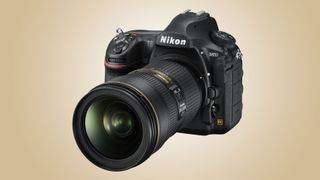
5. Nikon D850
High resolution meets high speed
Type: DSLR | Sensor size: Full-frame CMOS | Resolution: 45.4MP | Lens: Nikon F | Screen type: 3.2-inch tilt-angle touchscreen, 2,359,000 dots | Viewfinder: Optical | Maximum continuous shooting speed: 7fps | Movies: 4K | User level: Expert
Superb AF system
No crop-factor at 4K
SnapBridge clunky to use
Live View focusing speed
The long-awaited successor to the D810 arrived earlier this year, and Nikon certainly didn't hold back with the specs. With a fresh 45.4MP full-frame sensor, a highly advanced 153-point AF system and 7fps shooting, supported by features such as a tilting touchscreen and whole suite of connectivity options, the the D850 is the most advanced DSLR we've seen. Video-wise, there’s lots to love. The camera is capable of 4K UHD capture at 30p/25p/24p, and that's using all the sensor - no unwanted cropping here, allowing you to take full advantage of your lenses. Other video features include ports for both microphone and headphone sockets, as well as a Flat Picture Profile, zebra patterning and Power Aperture Control. You can also record at 120fps in Full HD quality. A brilliant DSLR that's great at shooting video too.
Read our in-depth Nikon D850 review
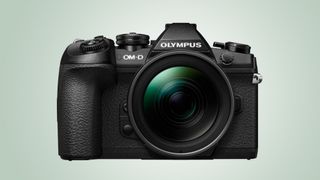
6. Olympus OM-D E-M1 Mark II
Top-end OM-D model impresses across stills and video alike
Type: Mirrorless | Sensor size: Micro Four Thirds | Resolution: 20.4MP | Lens: Micro Four Thirds | Monitor: 3.0-inch free-angle display, 1,037,000 dots | Viewfinder: EVF | Maximum continuous shooting speed: 60fps | Movies: 4K | User level: Expert
Both DCI 4K and UHD 4K capture
Amazing image stabilisation system
Dense menus
Expensive
“The best Micro Four Thirds camera yet” was what we concluded from our time testing the Olympus OM-D E-M1 Mark II, and video is one area where Olympus has made significant improvements over previous models. Not only do you get 4K capture in both DCI and UHD flavours, you also get clean output over HDMI at 4:2:2, a headphone port for audio monitoring and the benefits of Olympus’s fast Hybrid AF system, which works in conjunction with the touchscreen for even easier subject selection. Whether you’re shooting stills or videos, you also get one of the most effective image stabilisation systems we’ve yet seen, which will please those who expect to be largely using the camera handheld. Other reasons why the camera walked away with a full five stars include its excellent weather-sealing, lifelike EVF, and the capability to fire at 18fps with continuous AF and AE tracking. Those who want to easily achieve a very shallow depth of field may not prefer the smaller Micro Four Thirds sensor over larger-sensor offerings, but with the right lens and technique you can still isolate subjects from their surroundings on such a camera without bother. In any case, while Panasonic may have had a head start with video, the OM-D E-M1 Mark II certainly sets the bar high for a flagship Micro Four Thirds camera.
Read our in-depth Olympus OM-D E-M1 Mark II review

7. Fujifilm X-T2
The retro X series welcomes its first 4K-enabled member
Type: Mirrorless | Sensor size: APS-C | Resolution: 24.3MP | Lens: Fuji X | Monitor: 3.0-inch tilt-angle display, 1,040,000 dots | Viewfinder: EVF | Maximum continuous shooting speed: 8fps | Movies: 4K | User level: Intermediate/Expert
Weather-sealed
Oversampling
Separate grip recommended
No touchscreen
The X-T2 was undoubtedly one of the highlights of the past 12 months, and showed just how much more seriously Fujifilm was taking video recording with its X series. Its 4K UHD footage is created by oversampling – i.e. capturing more detail than required – so the output footage ends up with better clarity and less risk of artefacts. You can also output 4:2:2 footage through the camera’s HDMI port (albeit in 8-bit) and access a Log gamma profile while doing so. Users who enjoy using Fujifilm’s Film Simulations modes for stills will no doubt be pleased to know that you can also use these for video, although the inclusion of a headphone port only on the optional grip, together with the 10-minute time limit on 4K footage (at least without the grip), may discourage some. Still, with weather-sealing, a cracking viewfinder and fast focusing, there’s plenty to get excited about. Ultimately, if you want a smart, retro-styled camera that can shoot high-quality stills and detailed 4K footage, it’s hard to think of a more fitting solution.
Read our in-depth Fujifilm X-T2 review
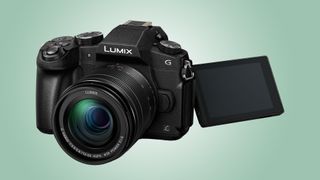
8. Panasonic Lumix G80 / G85
With an excellent IS system on board, the G80 is fit for handheld shooting
Type: Mirrorless | Sensor size: Micro Four Thirds | Resolution: 16MP | Lens: Micro Four Thirds | Monitor: 3.0-inch display, 1,040,000 dots | Viewfinder: EVF | Maximum continuous shooting speed: 9fps | Movies: 4K | User level: Beginner/intermediate
Dual IS Mark II is very effective
Sensor produces great results
No headphone port
Noise reduction a little harsh
It might be one of Panasonic’s more junior offerings in its Lumix range of mirrorless cameras, but the Lumix G80 (known as the G85 in the US) has the advantage of being relatively new, and thus kitted out with the latest technology. The Dual IS Mark II system means you benefit from both body and lens image stabilisation, and the former also works to steady unstabilised optics. Footage itself can be recorded at up to 30p, at a bit rate of up to 100Mbps, and you can also call upon zebra patterning and focus peaking to help when recording. Panasonic’s clever Live Cropping feature is also on board, and this allows for professional-looking panning and zooming all in-camera, although this is output at HD quality. One sore point is that there's no headphone port for audio monitoring, although this isn't a glaring oversight when you consider the model’s target market; what’s more key is that there is a microphone port. The fact that the camera ‘only’ has a 16MP sensor is somewhat offset by the fact that it has no optical low-pass filter; we found this recorded excellent details, and with moiré only occasionally visible in footage.
Read our in-depth Panasonic Lumix G80 / G85 review
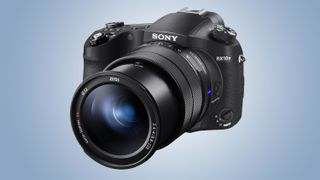
9. Sony Cyber-shot RX10 IV
A cracking travel camera with excellent video – but it comes at a price
Type: Compact | Sensor size: 1-inch CMOS | Resolution: 20.2MP | Lens: 24-600mm, f/2.4-4 | Monitor: 3-inch tilting touchscreen, 1.44 million dots | Viewfinder: EVF | Maximum continuous shooting speed: 24fps | Movies: 4K | User level: Intermediate/Expert
Excellent lens
Wide choice of frame rates
No built-in ND filter
Expensive
If you're looking for a powerful all-in-one camera, then you're not going to go far wrong with Sony's brilliant RX10 IV. With a long and fast 24-600mm f/2.4-4 zoom lens partnered with a stacked 1-inch type 20.2MP sensor and fast 315-point phase-detect AF system, it's an incredibly versatile camera. It doesn't disappoint when it comes to video either, with 4K UHD footage captured with 1.7x more information than actually required without any pixel binning, before being downsampled to 4K for the sake of quality. This happens at a 100Mbps maximum bit rate, and you can boost the camera up to 960fps for slow-motion footage too. All of this is supported by a clean HDMI output, zebra patterning and both microphone and headphone ports. You also get an S-Log2 gamma profile in addition to the Picture Profiles (which you can adjust), and Sony’s Gamma Display Assist mode to help you get a better idea of what graded footage would look like. It’s not cheap, but there's nothing quite like it.
Read our in-depth Sony Cyber-shot RX10 IV review

10. Sony Cyber-shot RX100 V
You won’t get much change from four figures, but there’s no doubting its capabilities
Type: Compact | Sensor size: 1-inch CMOS | Resolution: 20.1MP | Lens: 24-70mm f/1.8-2.8 | Monitor: 3-inch tilting, 1.23 million dots | Viewfinder: EVF | Maximum continuous shooting speed: 24fps | Movies: 4K | User level: Intermediate
Superb 4K footage
24fps with AF/AE
Five-minute limit on 4K footage
Pricey for a compact
Sony has enjoyed much success with its RX100 line, and its latest RX100 V picks up from where the Mark IV left off. Many of its video specs are shared with the RX10 III, with footage recorded at 1.7x the amount required and subsequently downsampled to 4K. You can record at up to 30fps and take advantage of the stepless control ring around the lens, while supporting functions include an S-Log2 gamma profile, focus peaking, zebra patterning and slow-motion recording. Naturally on such a small camera you don't get ports for microphones or headphones, although the lack of a touchscreen may bother people more. Still, you do get Sony’s excellent hybrid AF system for focusing. Add a built-in ND filter, high-quality EVF, a tilting screen and a super-fast 24fps burst-shooting mode with autofocus and auto-exposure maintained throughout, and it’s amazing that something so powerful can still slip inside your pocket. The price tag is significant, but if it’s beyond your budget there's still the RX100 IV, which manages to offer 4K shooting and plenty of shared technology at a keener price point.


Aucun commentaire:
Enregistrer un commentaire